| Home | Home | Hem |
Gallerier: |
. |
||||||
| . |
..Coming soon |
|
. |
This is the blue poppy
Try to imagine the view of 6000 Meconopsis plants blooming in a field in the middle of Sweden! I started this project in fall 1999 and hope that it is going to be completed in fall 2003. I am not a professional gardener and there is a lot I have to learn. It is not an easy task to grow Meconopsis in an open field and there are no previous Swedish experiences to learn from. The idea of the project is not only to provide a magical view, but also to produce seed. |
C
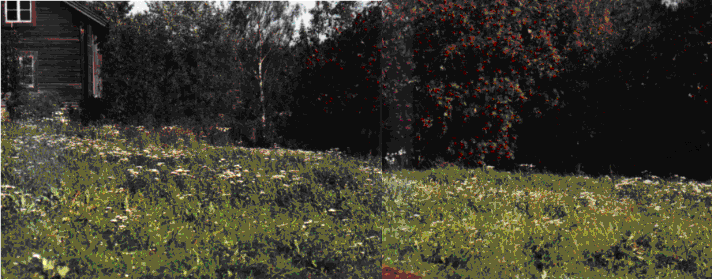
In the beginning there was an old meadow between the stream behind the trees and my summer house and garden |
o
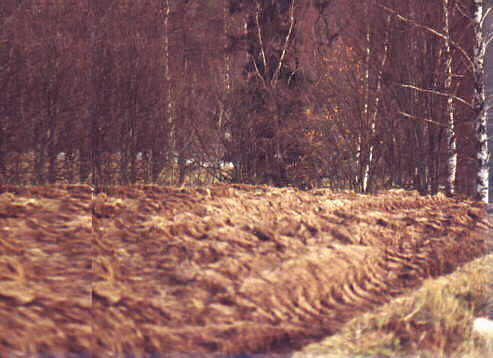 |
|
|
Our kind neighbour Birger, ploughed the meadow in fall 1999. |
My friend Göran helped me in May 2000 to spread a layer of peat evenly over the heavy clay. The three 'hills' in the background consist of horse manure, which my husband Sören and my sons spread over the beds, as soon as I have cleaned them from weed |
I sowed the plants at home on my balcony in Stockholm and moved them to Övertänger in May 2000.
|
|
|
|
| In June I started to transplant the seedlings into 'Starpots'. In these pots, used in the forest industry, the roots were developing rapidly and after about a month, I could move the plants to a nursery bed. | In some beds close to the house, the plants grew on for one more month. After that, I could move them to the field. | The 600 plants I planted out in July and August were strong and healthy. In many cases there were already two or three rosettes. |
Now I am waiting for next summer, when most of the 600 Meconopsis should bloom for the first time. Meanwhile there is a lot to do: sowing, planning of the irrigation system and weeding, weeding, weeding.......
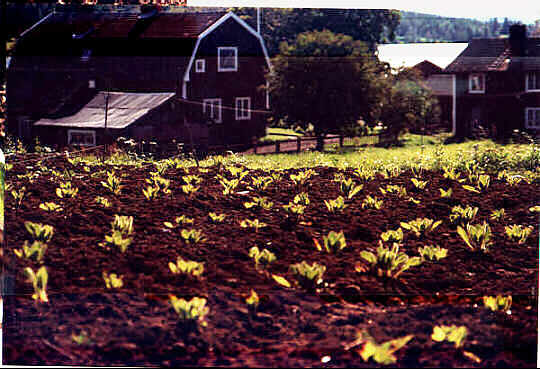
Fall 2000
|
Spring 2001 Almost all of the 600 plants, planted in summer 2000, had survived the winter and were looking strong and healthy. My sons and grandsons were helping to prepare the planting of 2 400 new plants this summer. |
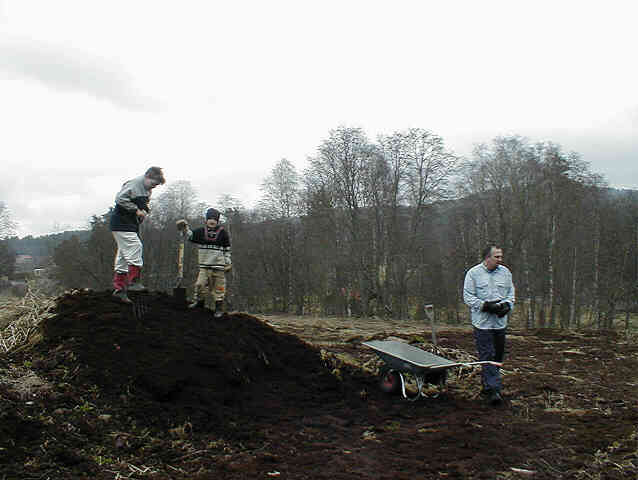 |
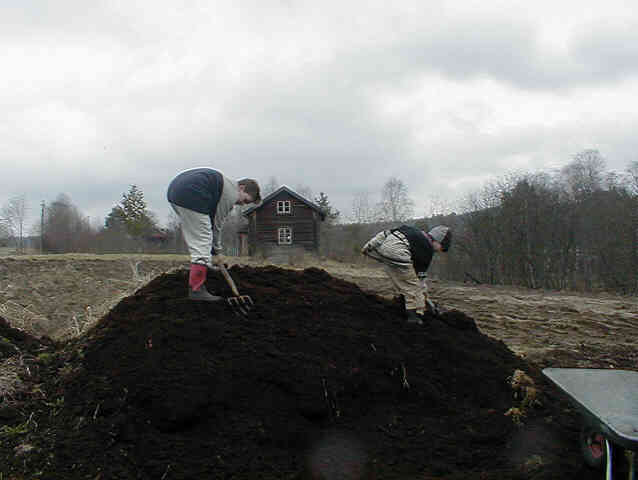 |
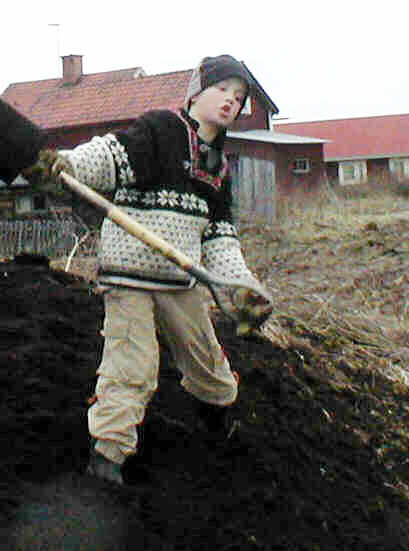 |
Maximilian, 6 year old, and Gabriel, 12 years, and their father Erik are spreading horse manure in the end of April 2001
|
But then.........
I started feeding the plants and watering them, watering them, watering them. There was no rain and the strong northern wind continued day after day. But the watering seemed to help and after a week I felt a little more confident. In the middle of June the first plants started blooming. The large flowers opened on unusually short stalks, an effect of the drought.
Among all the bright blue flowers, there were two plants with dark violet flowers. One of them died almost immediately without even leaving some seed. But the other one developed into a strong plant, and had at least five rosettes of leafs in fall 2001. I am planning to propagate this plant and call it 'Gabriel Fiedler' in honour of my eldest grandson.
Fall/winter 2001 When fall arrived, I could summarise my experiences of these two
first years: In the end of December 2001 there are already a lot of new seedlings on my balcony and more should germinate during the coming spring. Additionally I sowed some rows in the open field in October 2001. I am going to report about the outcome of my sowing experiments in spring 2002. |
|
New seedlings in December 2001 |